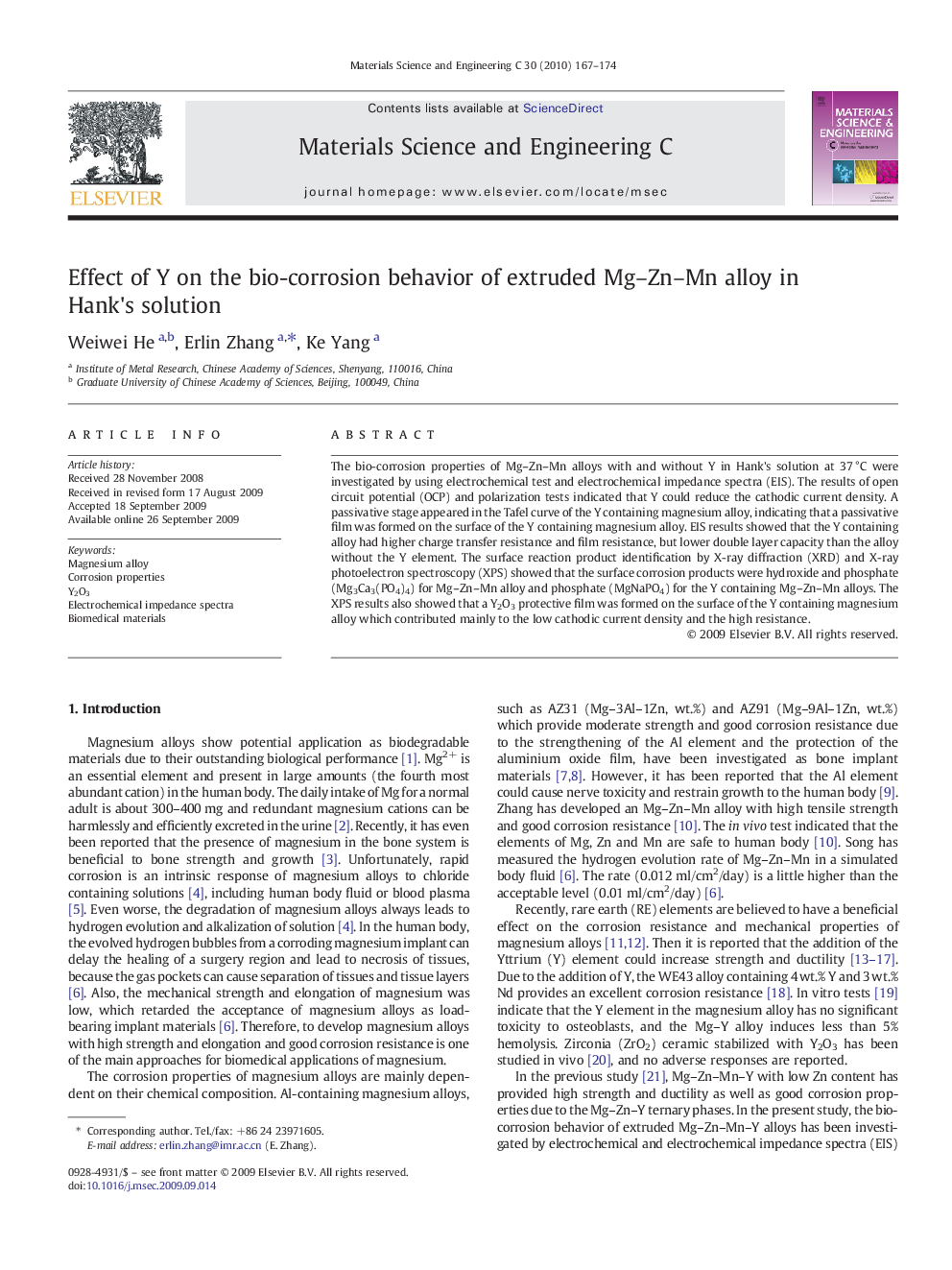| کد مقاله | کد نشریه | سال انتشار | مقاله انگلیسی | نسخه تمام متن |
|---|---|---|---|---|
| 1430107 | 987195 | 2010 | 8 صفحه PDF | دانلود رایگان |

The bio-corrosion properties of Mg–Zn–Mn alloys with and without Y in Hank's solution at 37 °C were investigated by using electrochemical test and electrochemical impedance spectra (EIS). The results of open circuit potential (OCP) and polarization tests indicated that Y could reduce the cathodic current density. A passivative stage appeared in the Tafel curve of the Y containing magnesium alloy, indicating that a passivative film was formed on the surface of the Y containing magnesium alloy. EIS results showed that the Y containing alloy had higher charge transfer resistance and film resistance, but lower double layer capacity than the alloy without the Y element. The surface reaction product identification by X-ray diffraction (XRD) and X-ray photoelectron spectroscopy (XPS) showed that the surface corrosion products were hydroxide and phosphate (Mg3Ca3(PO4)4) for Mg–Zn–Mn alloy and phosphate (MgNaPO4) for the Y containing Mg–Zn–Mn alloys. The XPS results also showed that a Y2O3 protective film was formed on the surface of the Y containing magnesium alloy which contributed mainly to the low cathodic current density and the high resistance.
Journal: Materials Science and Engineering: C - Volume 30, Issue 1, 1 January 2010, Pages 167–174